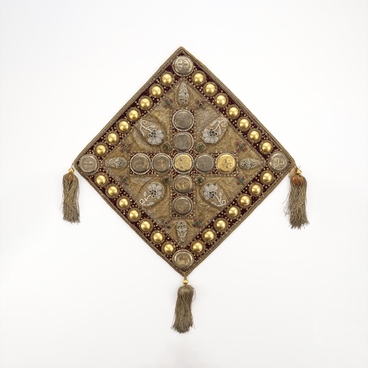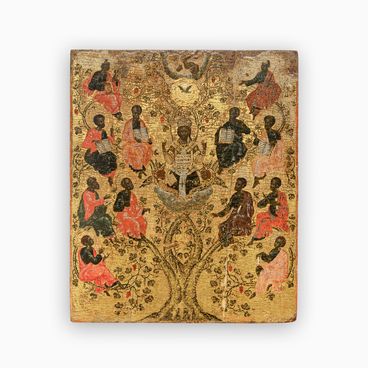St. Nicholas the Wonderworker, Archbishop of Myra of Lycia, became revered as a great saint of God. He was born in the city of Patara in the Lycian region. He was the only son of pious parents who vowed to dedicate him to God. According to legend, he excelled in the study of Divine Scripture from childhood. He stayed in the church during the day, and at night he prayed and read books. He prayed incessantly and gave all his possessions to the poor.
The local veneration of Archbishop Nicholas of Myra of Lycia began shortly after his death. Nicholas’ veneration throughout the Christian world took shape between the 4th and 7th centuries.
Among all Christian saints, St. Nicholas has the most developed iconography. A significant number of different types of his images were created in Byzantium and in Russia. The oldest and most common type is the half-length image, which was formed in Byzantine and Russian art of the 11th–13th centuries. In such images, the saint blesses with his right hand, slightly raised, and holds the closed Gospel with his left. A less common version of such icons depicts St. Nicholas the Wonderworker with an open Gospel. There are many icons of St. Nicholas that feature the figures of Jesus Christ and the Mother of God above the saint, in cloudy celestial spheres.
Shoulder-length icons came to Russia from Byzantium and became popular during the reign of John the Terrible, who regarded Nicholas the Wonderworker as his patron saint. It is believed that these are the most dramatic and intimate images: the saint appears to be addressing the worshiper and invites them to a dialogue.
Icon painters gradually developed a standardized approach to depicting the facial characteristics of Saint Nicholas. At first, he was represented as a strict, handsome man. Over time, the saint’s face acquired very recognizable features: a high forehead with receding hairline, a thin nose with wide nostrils, and a beard.
In the shoulder-length icon, presented in the Russian Heritage Museum, St. Nicholas is depicted in a white omophorion with dark crosses. His collar is also partly visible. The saint’s face is large, with a high and wide forehead, big eyes, a thin long nose and a small mouth. To the left and right of Nicholas there are figures of Christ with the Gospel in His hands and the Mother of God holding the omophorion, a sign of saintly dignity.


